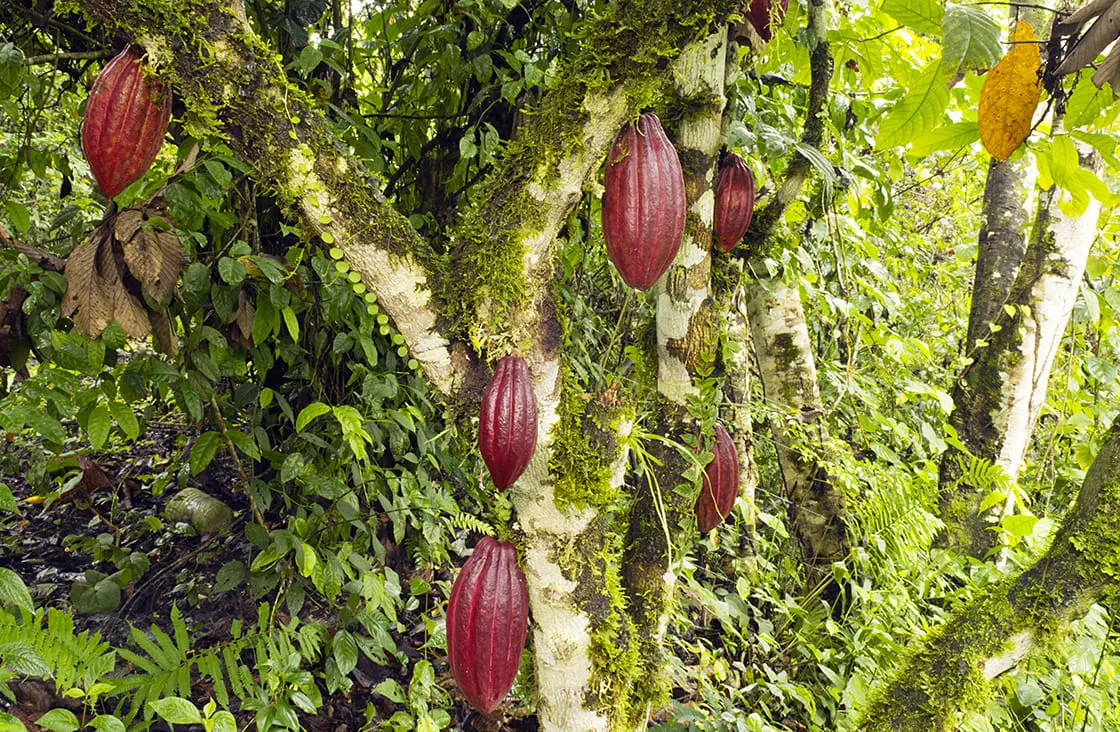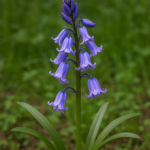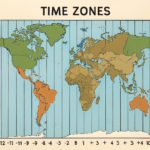
Cacao trees, the source of chocolate, hold a fascinating place in both agriculture and culture. These trees not only provide the delicious cacao beans used in a variety of chocolate products but also play a significant role in supporting biodiversity and the livelihoods of farmers. From their historical importance in ancient civilizations to their health benefits today, cacao has a rich and complex story. Here, we explore several intriguing facts about cacao, highlighting its ecological, economic, and cultural significance.
Origin: The cacao tree, scientifically known as Theobroma cacao, is indigenous to the tropical regions of Central and South America. It thrives in the humid, warm climate found in the Amazon basin, where it is believed to have been cultivated for over 3,000 years. The name “Theobroma” means “food of the gods” in Greek, reflecting the high esteem in which ancient civilizations held cacao. Archaeological evidence suggests that the Olmecs, one of the earliest Mesoamerican cultures, were the first to cultivate cacao, followed by the Maya and Aztecs, who used it in various rituals and as a beverage.
Scientific Classification: The cacao tree belongs to the Malvaceae family, which includes other economically important plants such as hibiscus and cotton. Within this family, it is classified under the genus Theobroma. The species name “cacao” distinguishes it from other species within the genus. The classification highlights the tree’s unique botanical characteristics, such as its large, leathery leaves and its distinctive flowers, which are crucial for its reproduction and fruit production.
Height: Cacao trees are typically medium-sized, growing to a height of 4 to 8 meters (13 to 26 feet). This height allows them to thrive in the understory of tropical rainforests, where they can receive filtered sunlight. The structure of the tree, with its broad canopy, helps create a microclimate that is conducive to the growth of cacao pods. The height of the tree can vary depending on factors such as the variety of cacao, environmental conditions, and cultivation practices.
Lifespan: The lifespan of a cacao tree can range from 25 to 50 years, although some trees may live longer under optimal conditions. The most productive phase of a cacao tree’s life typically occurs between 10 to 30 years of age. During this period, the tree produces the highest yield of cacao pods, which are harvested for their beans. Proper care, including pruning and pest management, can extend the productive years of the tree and enhance its overall health and yield.
Flowers: Cacao trees produce small, delicate flowers that are typically white or pale pink and have a sweet fragrance. These flowers are unique because they grow directly from the trunk and branches of the tree, a phenomenon known as cauliflory. Each flower measures about 1 to 2 cm (0.4 to 0.8 inches) in diameter and is pollinated primarily by tiny midges. The flowers are short-lived, lasting only a few days, and only a small percentage will develop into cacao pods, making effective pollination crucial for cacao production.
Fruit: The cacao fruit, commonly referred to as a pod, is oval-shaped and can measure between 15 to 30 cm (6 to 12 inches) in length. The pods can vary in color, ranging from green to yellow, orange, or red, depending on the variety and ripeness. Each pod contains a sweet, white pulp surrounding the cacao seeds (beans). When ripe, the pods are harvested by hand, and the seeds are extracted for fermentation and drying, essential steps in developing the flavor of chocolate.
Seeds: Each cacao pod contains 20 to 50 seeds, known as cacao beans, which are the primary ingredient in chocolate production. The seeds are encased in a sweet, gelatinous pulp that is also edible. After harvesting, the beans undergo fermentation for several days, during which they develop their characteristic flavors and aromas. The seeds are then dried, roasted, and processed into chocolate products. The number of seeds per pod can vary based on environmental conditions and the specific cacao variety.
Harvesting: It takes about 5 years for a cacao tree to begin producing fruit after it is planted. This initial period is critical for the tree to establish a strong root system and develop its canopy. Once the tree starts bearing fruit, it can produce pods year-round, with peak harvesting seasons varying by region. Farmers typically harvest cacao pods by hand using machetes, ensuring that they do not damage the tree or other pods. Proper harvesting techniques are essential for maintaining the health of the tree and maximizing yield.
Cacao Production: The leading producers of cacao are Côte d’Ivoire (Ivory Coast), Ghana, and Indonesia, which collectively contribute to over 70% of the world’s cacao supply. Côte d’Ivoire alone produces around 2 million tons of cacao annually, making it the largest producer globally. The cacao industry is vital to the economies of these countries, providing livelihoods for millions of smallholder farmers. However, the industry faces challenges such as fluctuating prices, climate change, and the need for sustainable farming practices.
Cacao Price: The price of cacao fluctuates based on various factors, including global supply and demand, weather conditions, and market trends. In recent years, the average price has ranged from approximately $2,500 to $3,000 per ton. This price is influenced by the quality of the cacao, with fine-flavor varieties often fetching higher prices. The cacao market is also affected by the practices of large chocolate manufacturers, who may seek to stabilize prices through contracts with farmers. Additionally, the price can vary significantly between regions, reflecting the economic conditions and production costs in different cacao-producing countries. Understanding these market dynamics is crucial for farmers and stakeholders within the cacao supply chain.
Chocolate Production: It takes about 400 cacao beans to produce one pound (approximately 0.45 kg) of chocolate. This conversion highlights the labor-intensive nature of chocolate production, as each bean must be harvested, fermented, dried, roasted, and processed to extract the cocoa solids and cocoa butter used in various chocolate products. The yield from cacao trees can vary significantly based on factors such as tree health, growing conditions, and farming practices, making the quality and quantity of beans critical for chocolate manufacturers. Additionally, the process of turning beans into chocolate involves several steps, including grinding and conching, which further emphasizes the complexity of chocolate production.
Fermentation: After harvesting, cacao beans undergo fermentation for 5 to 7 days, a crucial step in developing their flavor profile. During fermentation, the beans are placed in shallow containers or wrapped in banana leaves, allowing natural yeasts and bacteria to break down the sugary pulp surrounding the beans. This process not only enhances the flavor but also reduces bitterness and helps develop the characteristic chocolate aroma. Proper fermentation is essential, as it can significantly impact the quality of the final chocolate product. The beans are then dried in the sun to reduce moisture content before being shipped to chocolate manufacturers.
Theobromine Content: Cacao beans contain about 1 to 2.5% theobromine, a compound that is chemically similar to caffeine. Theobromine is a stimulant that can have various effects on the body, including increased heart rate and improved mood. Unlike caffeine, theobromine has a milder stimulant effect, which contributes to the pleasurable sensation associated with consuming chocolate. The presence of theobromine, along with other compounds such as flavonoids, makes dark chocolate particularly appealing for its potential health benefits, including antioxidant properties and cardiovascular support.
World Chocolate Day: Celebrated on July 7, World Chocolate Day marks the introduction of chocolate to Europe in 1550. This day is a global celebration of chocolate, where enthusiasts indulge in various chocolate treats and participate in events highlighting the history and cultural significance of chocolate. The introduction of chocolate to Europe transformed it from a traditional Mesoamerican beverage to a popular delicacy enjoyed worldwide. The day serves as an opportunity to appreciate the rich history of cacao cultivation and the journey of chocolate from bean to bar.
Largest Cacao Producer: Côte d’Ivoire is the largest producer of cacao, with an annual production of about 2 million tons. This West African nation plays a pivotal role in the global cacao market, supplying a significant portion of the world’s cacao beans. The country’s economy heavily relies on cacao farming, with millions of smallholder farmers engaged in its cultivation. However, challenges such as fluctuating prices, environmental issues, and labor concerns, including child labor, have prompted efforts to promote sustainable and ethical cacao production in the region.
Cacao Plantations: Cacao is typically grown in tropical climates, specifically between 20 degrees north and south of the equator. These regions provide the warm temperatures, high humidity, and consistent rainfall that cacao trees need to thrive. Cacao plantations can vary in size, from small family farms to large commercial operations, and are often intercropped with other crops to enhance biodiversity and soil health. Sustainable cacao farming practices, such as agroforestry, help maintain ecological balance while providing livelihoods for farmers.
Genetic Diversity: There are three main varieties of cacao: Criollo, Forastero, and Trinitario. Criollo is considered the rarest and most expensive variety, known for its complex flavor profile and low yield. Forastero is the most widely cultivated variety, known for its hardiness and higher yield, making it a staple in mass chocolate production. Trinitario is a hybrid of Criollo and Forastero, combining desirable traits from both varieties. The genetic diversity within cacao is essential for breeding programs aimed at improving disease resistance, yield, and flavor characteristics.
Cacao and Biodiversity: Cacao farms can support biodiversity by providing habitats for various species when managed sustainably. Agroforestry practices, which involve growing cacao alongside other trees and plants, create a diverse ecosystem that benefits both the environment and the farmers. These practices can help preserve local wildlife, improve soil health, and reduce the need for chemical inputs. By promoting biodiversity on cacao farms, farmers can enhance resilience to climate change and pests while ensuring sustainable production.
Cacao and Biodiversity: Cacao farms, when managed sustainably, can play a crucial role in supporting biodiversity. Sustainable cacao farming practices often involve agroforestry systems that integrate cacao trees with other plants and trees, creating a multi-layered ecosystem. This approach not only provides habitats for various species, including birds, insects, and other wildlife, but also helps maintain soil health and reduces the need for chemical fertilizers and pesticides. By preserving natural habitats and promoting diverse plant life, sustainable cacao farming contributes to ecological balance and resilience, making it a vital component of biodiversity conservation.
Chocolate Consumption: The average American consumes approximately 9.5 pounds (4.3 kg) of chocolate each year, reflecting the widespread popularity of this beloved treat. Chocolate is enjoyed in various forms, from bars and bonbons to hot cocoa and desserts. This consumption pattern highlights the cultural significance of chocolate in American society, often associated with celebrations, gifts, and comfort food. The increasing demand for chocolate has also led to a growing interest in the origins of cacao and the importance of sustainable sourcing to ensure that chocolate production does not harm the environment or exploit farmers.
World Cocoa Foundation: Established in 2000, the World Cocoa Foundation (WCF) is a pivotal organization dedicated to promoting sustainable cocoa production and enhancing the livelihoods of cocoa farmers. The WCF collaborates with various stakeholders, including farmers, industry leaders, and governments, to implement initiatives that improve farming practices, increase productivity, and support community development. By focusing on sustainability, the foundation aims to address challenges such as climate change, poverty, and child labor in cocoa-growing regions, ultimately ensuring a more equitable and sustainable cocoa supply chain.
Cacao and Health: Dark chocolate, which contains at least 70% cacao, is widely recognized for its health benefits, primarily due to its rich content of antioxidants. These antioxidants, particularly flavonoids, are believed to contribute to heart health by improving blood flow, reducing blood pressure, and lowering the risk of cardiovascular diseases. Additionally, dark chocolate has been linked to improved brain function, mood enhancement, and potential anti-inflammatory effects. However, moderation is key, as chocolate can also be high in sugar and calories, making it important to enjoy it as part of a balanced diet.
Smallest Cacao Producing Country: Ecuador is renowned for its fine-flavor cacao, producing approximately 300,000 tons annually. The country’s unique climate and diverse ecosystems contribute to the distinctive taste profiles of its cacao, which are highly sought after in the chocolate industry. Ecuadorian cacao is often used in premium chocolate products and is celebrated for its complex flavors, which can include fruity, floral, and nutty notes. The cultivation of cacao in Ecuador also plays a significant role in the local economy, providing livelihoods for many farmers and contributing to the preservation of traditional farming practices.
Cacao Festivals: The annual “Chocolate Festival” held in various countries celebrates the rich history and cultural significance of cacao and chocolate. These festivals typically feature tastings of different chocolate varieties, workshops on chocolate-making techniques, and educational sessions about cacao cultivation and sustainability. Attendees have the opportunity to learn about the journey of cacao from bean to bar and to appreciate the artistry involved in chocolate production. Such events not only promote the enjoyment of chocolate but also raise awareness about the importance of supporting sustainable and ethical cacao sourcing.
Cacao’s Cultural Significance: Cacao has deep cultural roots, particularly among the ancient Maya and Aztec civilizations, who revered it for its unique properties and versatility. Cacao was used in rituals, religious ceremonies, and as a form of currency, reflecting its high value in these societies. The Maya prepared a frothy drink made from cacao beans, often flavored with spices and consumed during important events. The Aztecs, too, held cacao in high esteem, associating it with the god Quetzalcoatl and using it in various ceremonial practices. This historical significance underscores cacao’s enduring legacy and its transformation into the beloved chocolate we know today.
Frequently Asked Questions About Cacao Trees
General Questions
1. What is a cacao tree?
- A cacao tree (Theobroma cacao) is a tropical evergreen tree native to the Amazon rainforest. It is the source of cocoa beans, which are used to make chocolate.
2. Where do cacao trees grow?
- Cacao trees thrive in hot, humid climates with plenty of rainfall. They are primarily cultivated in tropical regions, including West Africa, Central and South America, and Southeast Asia.
3. How long does it take a cacao tree to bear fruit?
- Cacao trees typically begin to bear fruit 3-4 years after planting. They can produce fruit for up to 25-30 years.
4. What do cacao trees look like?
- Cacao trees are relatively small, reaching heights of 10-15 meters (33-49 feet). They have large, leathery leaves and small, white flowers that grow in clusters.
5. How are cacao beans harvested?
- Cacao beans grow in pods that ripen to a yellow or orange color. The pods are harvested by hand and cut open to extract the beans and pulp.
Specific Questions
1. What is the difference between cacao and cocoa?
- The terms “cacao” and “cocoa” are often used interchangeably, but there is a slight difference. “Cacao” refers to the raw, unprocessed beans, while “cocoa” refers to the beans after they have been roasted, ground, and processed.
2. How are cacao beans processed into chocolate?
- The cacao bean processing involves several steps, including fermentation, drying, roasting, grinding, and tempering. Fermentation develops the flavor and aroma of the beans, while roasting adds a toasty flavor. The beans are then ground into a paste, which is mixed with sugar, milk, and other ingredients to create chocolate.
3. What are the different types of cacao beans?
- There are three main types of cacao beans: Criollo, Forastero, and Trinitario. Criollo is considered the most prized for its delicate flavor, while Forastero is the most widely cultivated due to its high yield. Trinitario is a hybrid of Criollo and Forastero, combining the flavor of Criollo with the hardiness of Forastero.
4. What are the health benefits of cacao?
- Cacao is rich in antioxidants, flavonoids, and magnesium. Studies have shown that consuming cacao can help improve heart health, lower blood pressure, and boost mood.
5. What is the impact of climate change on cacao production?
- Climate change poses a significant threat to cacao production. Rising temperatures and changes in rainfall patterns can affect the growth and yield of cacao trees. Additionally, diseases and pests that are more tolerant of warmer temperatures may become more prevalent.









